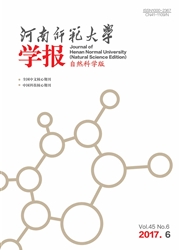

 中文摘要:
中文摘要:
量子系统自测试研究如何利用量子系统本身来测试其可信性,即根据量子设备的经典输入输出之间的统计关系来确认设备中所制备的量子态和所执行的量子测量.在经典世界中,要实现这种“设备自己测试自己”的目标并不可行,但量子力学中的非局域性却使这种自测试成为可能.量子系统自测试是设备无关量子密码协议的理论基础.综述了量子系统自测试领域的研究进展.具体来说,首先详细介绍了由两粒子最大纠缠态(即单态)及相应量子测量所构成的两方量子系统的自测试,包括测试1对量子态的CHSH方案、Mayers-Yao方案、(2,2,2,2)通用方案、(N,N,2,2)链式Bell方案,和测试2对量子态的双CHSH方案、魔方方案等.在此基础上,简要介绍了两方部分纠缠态及多方量子系统的自测试方案.最后对量子系统自测试未来的发展进行了展望.
 英文摘要:
英文摘要:
Self-testing refers to the possibility of characterizing uniquely the state and the measurements contained in quantum devices. It is based on the observed classical input-output statistics. This is a formidable task and is impossible in the classical world; however in quantum physics, the peculiar phenomena of non-locality can make this task possible. Self-testing provides fundamental basis for device independent quantum cryptography protocols. In this paper, we will summarize the pro-gress made in self-testing research. Firstly, we will introduce some self-testing criterion for the quantum system constructed by two-qubit maximum entangled state (singlet) and the corresponding measurements. The criterion including both of two scenari-os ,one copy of singlet and two parallel of singlets. For one copy of singlet, there are CHSH criteria, Mayers-Yao criteria, (2, 2,2,2) universal criteria and (N,N,2,2) Chain-Bell criteria; while for the two parallel of singlets, there are double-CHSH cri-teria and Magic Square Criteria. Then we will show how expand our analysis of the singlet to the case of any entangled two qu-bits and high dimensional states briefly. In the end of the paper, we look forward to the future of self-testing.
 同期刊论文项目
同期刊论文项目
 同项目期刊论文
同项目期刊论文
 期刊信息
期刊信息
